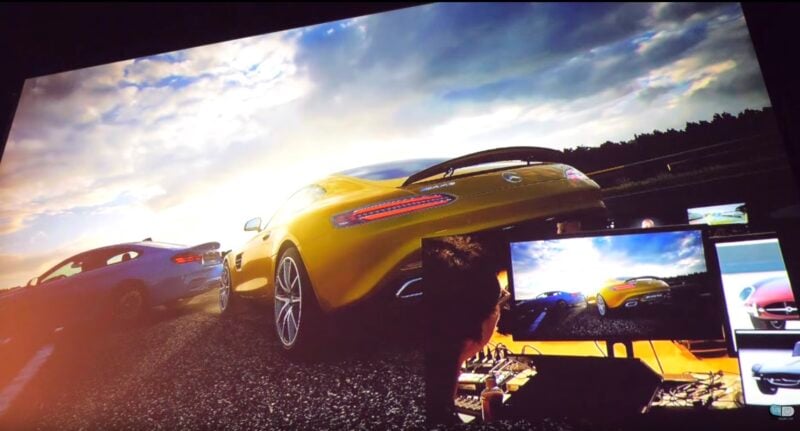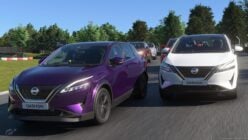It’s finally official: Sony has confirmed the name of its next-generation home gaming console. Shockingly, it’s going with… PlayStation 5.
That’s the first big takeaway from a new hands-on preview from the folks at Wired, but it’s certainly not the last. Sony is changing the feedback model of its venerable controller, and is using GT Sport to show it off.
It’s no secret Sony is prepping its next console for the 2020 holiday season. With more power under its hood and the goal of making load times more or less a thing of the past, it certainly sounds like a strong foundation to succeed the dominant PS4. This latest preview gives us our first real look at the next-gen (currently unnamed) controller, and the benefits it could provide for racing game fans.

Goodbye Rumble Motors
For starters, the rumble motors of old head to the big junk heap in the sky. In their place is a haptic feedback system, with actuators in the left and right controller grips. These allow more precise amounts of feedback, and in the case of GT Sport, can signify levels of grip with increased accuracy:
“Next, a version of Gran Turismo Sport that Sony had ported over to a PS5 devkit—a devkit that on quick glance looks a lot like the one Gizmodo reported on last week. (The company refused to comment on questions about how the devkit’s form factor might compare to what’s being considered for the consumer product.) Driving on the border between the track and the dirt, I could feel both surfaces. Doing the same thing on the same track using a DualShock 4 on a PS4, that sensation disappeared entirely. It wasn’t that the old style rumble feedback paled in comparison, it was that there was no feedback at all. User tests found that rumble feedback was too tiring to use continuously, so the released version of GT Sport simply didn’t use it.”
Taking Wired’s experience on board, it sounds like pad players won’t get the short stick in terms of feedback next generation. The haptic feedback can translate different road surfaces to the player, making it easier to understand what the car is doing (or about to do). It’s interesting that user feedback found this sort of constant information too tiring in rumble form — perhaps the nuance of the haptics makes it more palatable for pad players.
Adaptive Triggers
Arguably even more interesting for driving fans is the mention of “adaptive triggers”. This offers different levels of resistance for the long-travel triggers on the top of the pad. Wired’s example mentions a bow and arrow, with tension increasing the further the player pulls, but it’s not hard to imagine the driving game implications. Theoretically this could make braking on a pad similar to using a load-cell brake kit. Players could potentially even set their own pressure thresholds to find the amount of force they’re most comfortable with.
The not-a-DS5 also boasts an improved speaker over the current one in the DS4. It uses a USB-C port for charging its larger-capacity battery, and gains a small amount of weight over its predecessor. According to product manager Toshi Aoki some of these upgrades could’ve arrived with the PS4 Pro, but Sony decided against “a split experience”.

File Storage Changes and Ray-Tracing Info
There are other new tidbits on the PS5 as well. System architect Mark Cerny has confirmed there is hardware-based ray-tracing acceleration, for example. We’ve already seen what ray-tracing, which is a resource-heavy yet stunningly realistic lighting process, looks like, in a Gran Turismo Sport demonstration no less.
Sony will shake up the concept of file storage as well. One of the perks of the PS5’s solid-state drive approach will be less duplication of files in game design. To minimize load times, current games use many instances of common assets — say, trees — across the full game file. This won’t be necessary anymore. What’s more, it has the knock-on effect of decreasing game size, allowing devs to fit more unique content in the same space as before.
This approach also will allow players to pick and choose which parts of games they want to install. Not interested in the multiplayer portion of your new title? Don’t install it. Done with single player? Delete it, but not the whole game. We’ve seen a more brute-force approach to this in select titles recently, with the multiplayer arriving as a dedicated download, but this sounds much simpler.
Now that it’s been officially christened PlayStation 5, expect info on Sony’s next-gen console to pick up ahead of its launch next holiday season.
See more articles on PlayStation 5.











